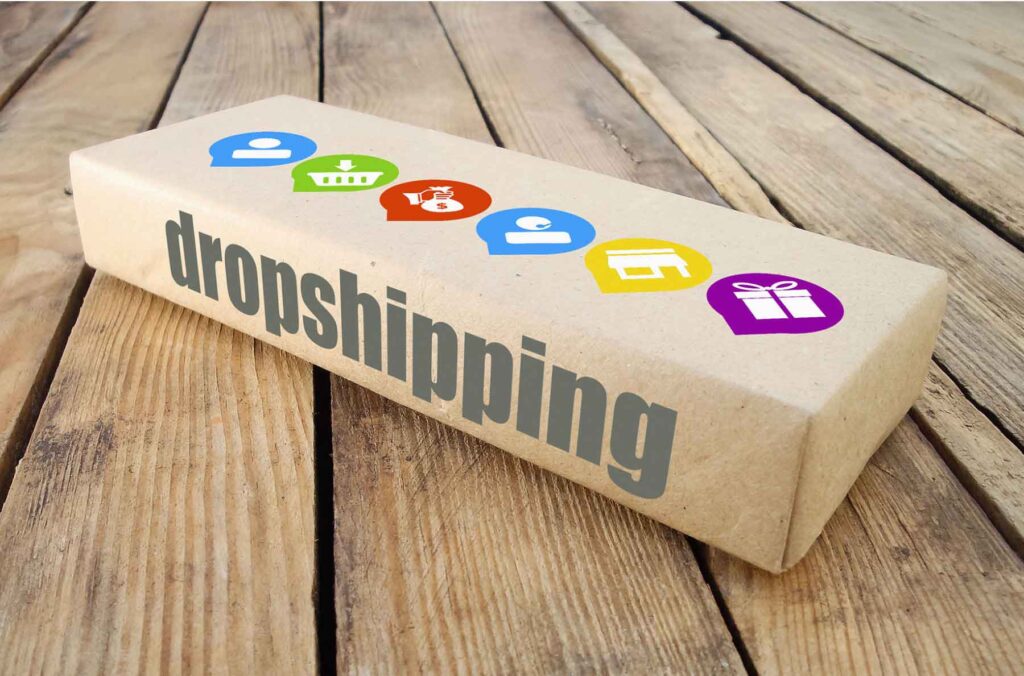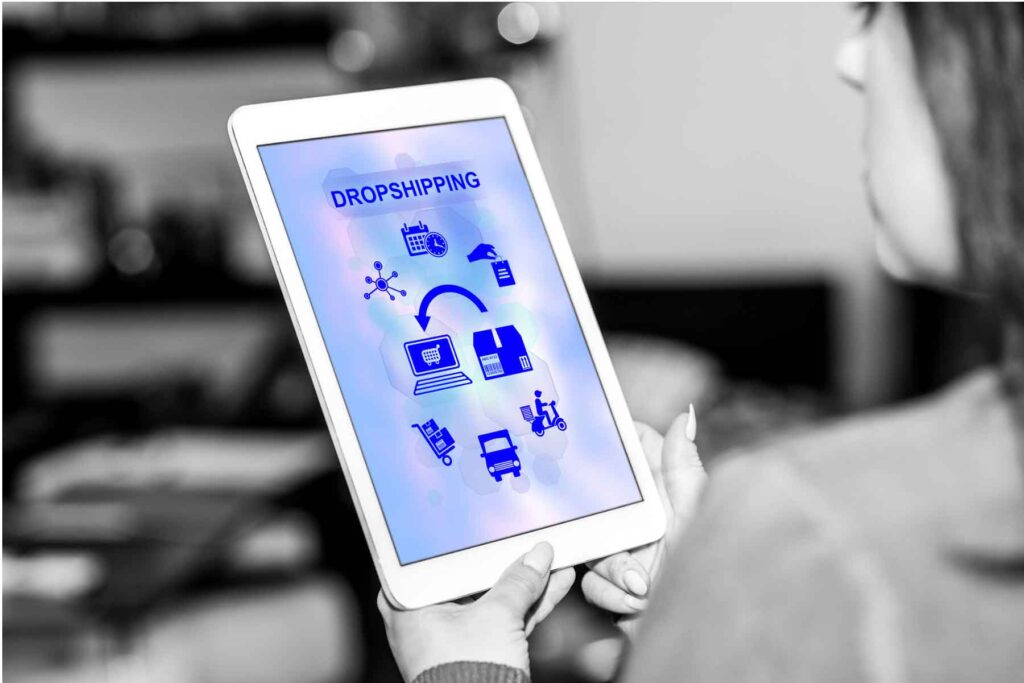How to Start Your Dropshipping business in the UAE
Dropshipping is a popular e-commerce business model that involves selling products online without holding inventory. Instead, the dropshipper works with a supplier who ships the products directly to the customer.

In the UAE, dropshipping is a viable business model, but there are some legal and logistical considerations to keep in mind. Here are some important things to consider:
- Business License: In the UAE, all businesses require a license to operate legally. To set up a dropshipping business in the UAE, you will need to obtain a trade license and a commercial license from the Department of Economic Development (DED).
- Shipping and Delivery: It’s important to work with a reliable supplier who can ship products to your customers in a timely and efficient manner. You may also need to consider local shipping and delivery options, as well as any customs and import regulations.
- Payment Gateway: To accept payments from customers, you will need to set up a payment gateway. Popular payment gateways in the UAE include PayTabs, Telr, and PayFort.
- Marketing and Promotion: To attract customers and drive sales, you will need to invest in marketing and promotion. This can include social media advertising, influencer marketing, email marketing, and other forms of digital marketing.
- Customer Service: Providing excellent customer service is essential for any e-commerce business, including dropshipping. Be sure to respond promptly to customer inquiries, offer refunds or returns when necessary, and provide a seamless shopping experience.
Dropshipping can be a profitable business model in the UAE, but it’s important to do your research and ensure that you comply with all legal and logistical requirements.
If you’re new to the world of dropshipping, it can seem intimidating at first. But don’t worry, we’ve got you covered! In this article, we’ll break down everything you need to know about dropshipping.
1. Choose a Niche
The first step in starting a dropshipping business is choosing a niche. A niche is a specific area of focus for your business. It’s important to choose a niche that you’re passionate about, as this will help you stay motivated and interested in your business over the long term.
When choosing a niche, think about your interests, hobbies, and skills. You can also research popular niches to get ideas for what’s currently selling well.
2. Find a Supplier
Once you’ve chosen your niche, it’s time to find a supplier. A supplier is the company that will manufacture and ship your products to your customers.
There are a few different ways to find a supplier. One option is to use a directory like AliExpress, which lists thousands of suppliers and manufacturers. Another option is to use a sourcing agent, who can help you find a supplier and negotiate prices.
It’s important to choose a supplier who offers quality products at a fair price. Look for suppliers who have good reviews and a track record of delivering products on time.
3. Set Up Your Website
The next step in starting a dropshipping business is setting up your website. Your website will serve as your online storefront, where customers can browse and purchase your products.
You can set up a website using a platform like Shopify or WooCommerce. These platforms offer templates and tools to help you design your website and add products.
When designing your website, it’s important to focus on user experience. Your website should be easy to navigate and should provide all the information customers need to make a purchase.
4. Add Products to Your Store
Once your website is set up, it’s time to add products to your store. You can do this by importing products from your supplier using a plugin or app.
When adding products to your store, it’s important to optimize your product pages for search engines. This will help your products appear higher in search results and drive more traffic to your site.
5. Market Your Store
The final step in starting a dropshipping business is marketing your store. There are many different marketing channels you can use to promote your store, including social media, email marketing, and paid advertising.
When marketing your store, it’s important to focus on building relationships with your customers. Offer excellent customer service, respond quickly to inquiries, and provide value through informative content.
In conclusion, dropshipping is a great business model for entrepreneurs in UAE who want to start an online store without holding inventory. By following the above step-by-step process, you can start your own dropshipping business and achieve success in the competitive world of e-commerce.
Dropshipping Pros and Cons

Before starting your dropshipping business here are some pros and cons to consider:
Pros:
- Low Startup Costs: One of the biggest advantages of dropshipping is the low startup costs. Since there’s no need to purchase inventory upfront, dropshippers can start their business with minimal investment. This makes it a great option for those who want to start an e-commerce business but don’t have a lot of capital.
- Scalability: Dropshipping allows for easy scaling since there’s no need to worry about managing inventory or warehousing. As your business grows, you can add or remove products as needed without any significant overhead costs.
- Flexibility: Dropshipping can be run from anywhere with an internet connection, making it a great option for digital nomads or anyone who wants to work remotely.
- Low Risk: Since you don’t have to purchase inventory upfront, dropshipping carries lower risk than traditional e-commerce models. This means that you can test different products and niches without worrying about losing money on unsold inventory.
- Wide Product Selection: With dropshipping, you can offer a wide range of products without holding inventory. This allows you to cater to a broader audience and offer a more diverse selection of products.
- Testing and Experimentation: With dropshipping, it’s easy to test and experiment with different products and niches. You can quickly add or remove products to see what works best for your audience.
Cons:
- Limited Control: With dropshipping, the supplier controls the inventory, which means that you have limited control over the product quality and availability.
- Shipping Issues: Dropshippers rely on their suppliers to handle shipping and delivery, which can lead to issues with lost or delayed products. This can harm your reputation and result in dissatisfied customers.
- Supplier Issues: Dropshippers may encounter issues with their suppliers, such as products being out of stock or of poor quality. This can result in lost sales and a negative customer experience.
- Thin Margins: Since dropshippers don’t have to purchase inventory upfront, profit margins are often low. This means that you may need to sell a high volume of products to make a significant profit.
- Customer Service: Dropshippers may be responsible for handling customer inquiries and returns, which can be time-consuming and challenging.
- Branding: It may be challenging to establish a unique brand identity with dropshipping since you’re relying on the products and branding of your suppliers. This can make it difficult to stand out from competitors and build a loyal customer base.
Dropshipping can be a great option for those who want to start an e-commerce business with low startup costs and minimal risk. However, it’s important to carefully consider the pros and cons and do your research before diving in.
Dropshipping Platforms and e-Commerce Tools

1. AliExpress:
AliExpress is an online retail platform owned by the Alibaba Group, a Chinese multinational conglomerate specializing in e-commerce. AliExpress was launched in 2010 and has since become a popular online shopping destination for buyers worldwide. Here are some details about AliExpress:
- Product Categories: AliExpress offers a vast selection of products in various categories, including electronics, fashion, home & garden, beauty & health, toys & hobbies, sports & entertainment, and more.
- Sellers: AliExpress is a marketplace that connects buyers with sellers from around the world. Anyone can become a seller on AliExpress, which means that the quality and reliability of products can vary significantly.
- Prices: AliExpress is known for its low prices, and many products are significantly cheaper than those found in traditional retail stores. However, prices can vary depending on the seller and product quality.
- Shipping: AliExpress offers free or low-cost shipping options, but shipping times can vary depending on the location of the seller and the buyer. It’s important to note that shipping from China to some countries can take several weeks.
- Payment: AliExpress accepts various payment methods, including credit cards, debit cards, and bank transfers. They also offer buyer protection through their Escrow service, which holds payments until the buyer confirms receipt of the product.
- Customer Service: AliExpress offers customer service in various languages, and buyers can contact sellers directly through the platform. However, communication can be challenging due to language barriers.
- Reviews and Ratings: AliExpress allows buyers to leave reviews and ratings for products and sellers, which can help other buyers make informed purchasing decisions.
- Coupons and Discounts: AliExpress offers various coupons and discounts, including new user coupons and store coupons, which can help buyers save even more money.
Overall, AliExpress offers a vast selection of products at low prices, making it a popular destination for online shoppers worldwide. However, buyers should be cautious and do their research before purchasing products from AliExpress, as product quality and reliability can vary significantly.
https://www.aliexpress.com/
2. Oberlo
Oberlo is an online platform that offers tools and resources for e-commerce businesses, particularly those involved in dropshipping. Here are some details about Oberlo:
- Product Sourcing: Oberlo offers a product sourcing service that allows e-commerce businesses to import products from AliExpress directly to their online store. This can help businesses find products to sell quickly and easily.
- Product Customization: Oberlo also offers product customization tools that allow businesses to add their branding to products and create unique product offerings.
- Inventory and Order Management: Oberlo offers inventory and order management tools that help businesses track their inventory levels and automate their order processing. This can help businesses streamline their operations and save time.
- Pricing: Oberlo offers three pricing plans: the Starter Plan, the Basic Plan, and the Pro Plan. The Starter Plan is free and allows businesses to import up to 500 products. The Basic Plan costs $29.90 per month and allows businesses to import up to 10,000 products. The Pro Plan costs $79.90 per month and offers additional features, such as bulk ordering and multiple user accounts.
- Integration: Oberlo integrates with various e-commerce platforms, including Shopify, WooCommerce, and BigCommerce. This makes it easy for businesses to set up their online store and start selling products.
- Education and Training: Oberlo offers educational resources and training for e-commerce businesses, including articles, videos, and webinars. These resources cover topics such as product sourcing, marketing, and sales.
Overall, Oberlo offers a range of tools and resources that can help e-commerce businesses succeed, particularly those involved in dropshipping. The product sourcing and customization tools can help businesses find and create unique products to sell, while the inventory and order management tools can help them streamline their operations. The pricing plans are reasonable, making it accessible to businesses of all sizes, and the integration with various e-commerce platforms makes it easy to set up an online store.
3. SaleHoo
SaleHoo is an online platform that offers tools and resources for e-commerce businesses, particularly those involved in dropshipping. Here are some details about SaleHoo:
- Supplier Directory: SaleHoo offers a comprehensive directory of verified suppliers from around the world. The directory includes over 8,000 pre-screened suppliers, which can help e-commerce businesses find reliable suppliers for their products.
- Product Research: SaleHoo offers tools for product research, including market research, keyword research, and trend analysis. This can help e-commerce businesses find profitable products to sell.
- Education and Training: SaleHoo offers educational resources and training for e-commerce businesses, including articles, videos, and webinars. These resources cover topics such as product sourcing, marketing, and sales.
- Community Support: SaleHoo has an active community of e-commerce businesses, where members can connect with each other, ask for advice, and share their experiences.
- Customer Service: SaleHoo offers customer service via email and phone, with support available 24/7. They also have a dedicated support team that can help with product sourcing and other issues.
- Pricing: SaleHoo offers two pricing plans: the Standard Plan and the Premium Plan. The Standard Plan costs $67 per year and includes access to the supplier directory and educational resources. The Premium Plan costs $127 per year and includes additional features, such as personalized support and access to advanced training.
Overall, SaleHoo offers a range of tools and resources that can help e-commerce businesses succeed, particularly those involved in dropshipping. The supplier directory and product research tools can help businesses find profitable products and reliable suppliers, while the educational resources and community support can help them develop their skills and grow their business.
4. Shopify
Shopify is an e-commerce platform that allows businesses to create and run their online store. Here are some details about Shopify:
- Website Builder: Shopify offers a website builder that allows businesses to create their online store without the need for technical skills. It offers various templates and designs that can be customized to suit a business’s branding.
- Product Management: Shopify offers tools for managing products, including inventory management, product variants, and pricing. This allows businesses to manage their product catalog easily.
- Payment and Shipping: Shopify integrates with various payment gateways, allowing businesses to accept payments from customers. It also offers tools for managing shipping rates and tracking orders.
- App Store: Shopify has an app store that offers various apps and plugins that can be used to add functionality to an online store. These include tools for marketing, social media, customer support, and more.
- Customer Support: Shopify offers customer support via email, phone, and live chat, with support available 24/7. It also has a dedicated help center that offers resources and guides for using the platform.
- Pricing: Shopify offers various pricing plans, including the Basic Shopify plan, the Shopify plan, and the Advanced Shopify plan. The Basic Shopify plan costs $29 per month and offers essential features for starting an online store. The Shopify plan costs $79 per month and offers additional features, such as gift cards and professional reports. The Advanced Shopify plan costs $299 per month and offers advanced features, such as third-party calculated shipping rates and advanced report building.
Overall, Shopify is a comprehensive e-commerce platform that offers a range of tools and resources for businesses to create and run their online store. The website builder and product management tools make it easy to set up and manage an online store, while the app store offers a range of add-ons for adding functionality. The pricing plans are reasonable, and the customer support is reliable, making it a popular choice for businesses of all sizes.
5. WooCommerce
WooCommerce is a free e-commerce plugin for WordPress websites. Here are some details about WooCommerce:
- Product Management: WooCommerce offers tools for managing products, including inventory management, product variants, and pricing. This allows businesses to manage their product catalog easily.
- Payment and Shipping: WooCommerce integrates with various payment gateways, allowing businesses to accept payments from customers. It also offers tools for managing shipping rates and tracking orders.
- Customizable: WooCommerce is highly customizable, allowing businesses to add functionality and change the appearance of their online store through themes and plugins. This means businesses can tailor their store to their specific needs and branding.
- App Store: WooCommerce has an app store that offers various plugins that can be used to add functionality to an online store. These include tools for marketing, social media, customer support, and more.
- Customer Support: WooCommerce offers customer support via email, phone, and live chat, with support available during business hours. It also has a dedicated help center that offers resources and guides for using the platform.
- Pricing: WooCommerce itself is free to use, but businesses may incur additional costs for hosting and using third-party plugins.
WooCommerce is a powerful e-commerce plugin for WordPress websites that offers a range of tools and resources for businesses to create and run their online store. The product management tools make it easy to manage an online store, while the high level of customization means businesses can tailor their store to their specific needs and branding. The app store offers a range of add-ons for adding functionality, and the customer support is reliable. The fact that it is free to use is a significant advantage, but businesses may incur additional costs for hosting and using third-party plugins.
6. Magento:
Magento is an open-source e-commerce platform that is highly customizable and scalable. Here are some details about Magento:
- Customizable: Magento is highly customizable, allowing businesses to add functionality and change the appearance of their online store through themes and extensions. This means businesses can tailor their store to their specific needs and branding.
- Product Management: Magento offers advanced tools for managing products, including inventory management, product variants, and pricing. This allows businesses to manage their product catalog easily.
- Payment and Shipping: Magento integrates with various payment gateways, allowing businesses to accept payments from customers. It also offers tools for managing shipping rates and tracking orders.
- App Store: Magento has an app store that offers various extensions that can be used to add functionality to an online store. These include tools for marketing, social media, customer support, and more.
- Scalable: Magento is highly scalable, meaning it can handle large amounts of traffic and transactions. This makes it an excellent option for businesses with high growth potential.
- Community Support: Magento has a large community of developers and users who provide support and resources for using the platform. This can be beneficial for businesses that need help with customization or troubleshooting issues.
- Pricing: Magento offers two versions – the Community Edition, which is free to use, and the Enterprise Edition, which is a paid version with advanced features and support.
Magento is a powerful and flexible e-commerce platform that offers a range of tools and resources for businesses to create and run their online store. The high level of customization and advanced product management tools make it a popular choice for businesses with complex product catalogs. The app store offers a range of add-ons for adding functionality, and the scalability of the platform means it can handle high volumes of traffic and transactions. The community support is also a significant advantage, and the fact that there is a free version available makes it accessible for businesses of all sizes.
Dropshipping using Shopify
If you are ready to setup your dropshipping store, you can start with Shopify or any other e-commerce platform.
Using Shopify, here’s how you can start::
- Sign up for a Shopify account: First, you need to create a Shopify account by going to their website (www.shopify.com) and clicking on the “Start free trial” button. Enter your email address and create a password to get started.
- Choose a theme: Once you have created your account, you will be prompted to choose a theme for your store. You can browse through the free and paid options available in the Shopify theme store, or you can choose to use a custom theme.
- Add products: After choosing a theme, it’s time to add products to your store. To do this, you need to find a supplier who offers dropshipping services. There are many suppliers available, but some of the popular ones include AliExpress, Oberlo, and Spocket. Once you have found a supplier, you can use their platform to find products and add them to your Shopify store.
- Set up payment and shipping methods: Next, you need to set up payment and shipping methods. Shopify offers a variety of payment options, including credit card, PayPal, and more. You also need to choose a shipping method that works for you and your customers.
- Customize your store: You can customize your store by adding pages, modifying the design, and adding apps that enhance the functionality of your store. You can also add social media buttons, an email opt-in form, and other elements to your site to make it more engaging for your customers.
- Launch your store: Once you have completed all the steps, you are ready to launch your store. You can start promoting your store on social media, run ads on Facebook or Google, and use other marketing tactics to drive traffic to your site.
Overall, setting up a dropshipping store using Shopify is a relatively simple process. With the right supplier and a bit of effort, you can have your store up and running in no time.

























